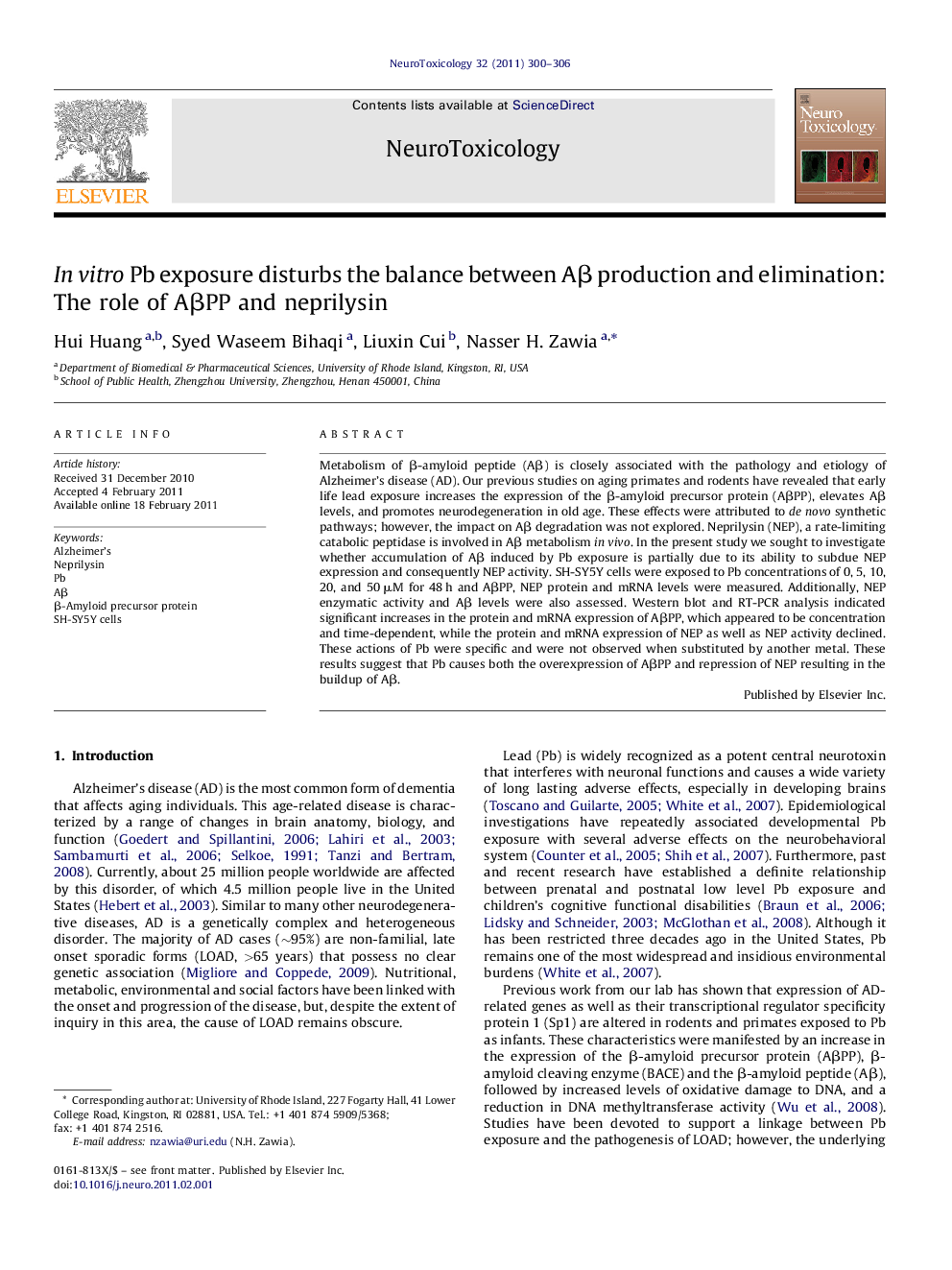| Article ID | Journal | Published Year | Pages | File Type |
|---|---|---|---|---|
| 5854991 | NeuroToxicology | 2011 | 7 Pages |
Metabolism of β-amyloid peptide (Aβ) is closely associated with the pathology and etiology of Alzheimer's disease (AD). Our previous studies on aging primates and rodents have revealed that early life lead exposure increases the expression of the β-amyloid precursor protein (AβPP), elevates Aβ levels, and promotes neurodegeneration in old age. These effects were attributed to de novo synthetic pathways; however, the impact on Aβ degradation was not explored. Neprilysin (NEP), a rate-limiting catabolic peptidase is involved in Aβ metabolism in vivo. In the present study we sought to investigate whether accumulation of Aβ induced by Pb exposure is partially due to its ability to subdue NEP expression and consequently NEP activity. SH-SY5Y cells were exposed to Pb concentrations of 0, 5, 10, 20, and 50 μM for 48 h and AβPP, NEP protein and mRNA levels were measured. Additionally, NEP enzymatic activity and Aβ levels were also assessed. Western blot and RT-PCR analysis indicated significant increases in the protein and mRNA expression of AβPP, which appeared to be concentration and time-dependent, while the protein and mRNA expression of NEP as well as NEP activity declined. These actions of Pb were specific and were not observed when substituted by another metal. These results suggest that Pb causes both the overexpression of AβPP and repression of NEP resulting in the buildup of Aβ.
